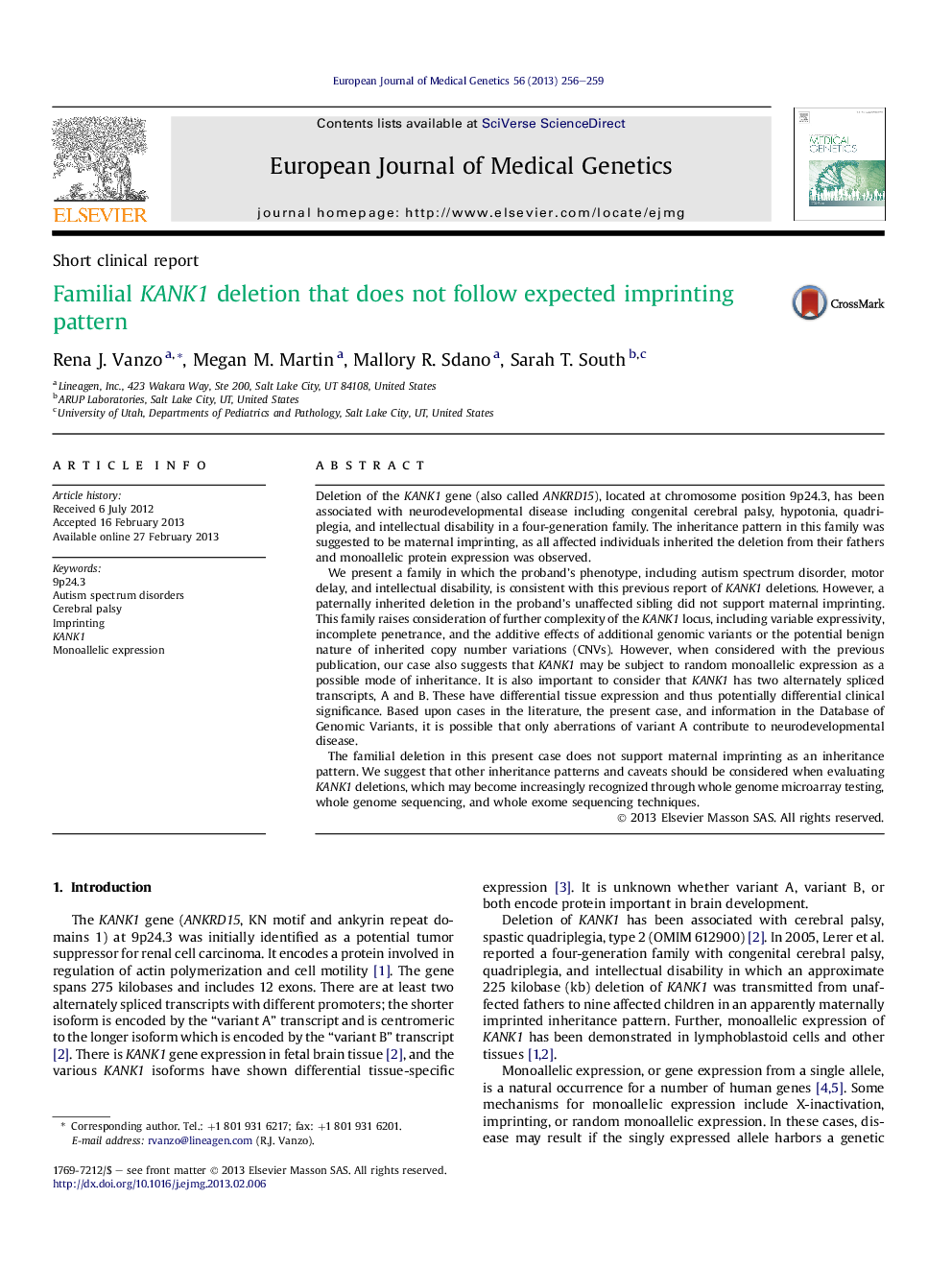| Article ID | Journal | Published Year | Pages | File Type |
|---|---|---|---|---|
| 5904969 | European Journal of Medical Genetics | 2013 | 4 Pages |
â¢KANK1 deletions are thought to cause a maternally imprinted developmental disorder.â¢We describe a similar deletion and phenotype that is not maternally imprinted.â¢We propose an alternative mechanism of inheritance for this developmental disorder.
Deletion of the KANK1 gene (also called ANKRD15), located at chromosome position 9p24.3, has been associated with neurodevelopmental disease including congenital cerebral palsy, hypotonia, quadriplegia, and intellectual disability in a four-generation family. The inheritance pattern in this family was suggested to be maternal imprinting, as all affected individuals inherited the deletion from their fathers and monoallelic protein expression was observed.We present a family in which the proband's phenotype, including autism spectrum disorder, motor delay, and intellectual disability, is consistent with this previous report of KANK1 deletions. However, a paternally inherited deletion in the proband's unaffected sibling did not support maternal imprinting. This family raises consideration of further complexity of the KANK1 locus, including variable expressivity, incomplete penetrance, and the additive effects of additional genomic variants or the potential benign nature of inherited copy number variations (CNVs). However, when considered with the previous publication, our case also suggests that KANK1 may be subject to random monoallelic expression as a possible mode of inheritance. It is also important to consider that KANK1 has two alternately spliced transcripts, A and B. These have differential tissue expression and thus potentially differential clinical significance. Based upon cases in the literature, the present case, and information in the Database of Genomic Variants, it is possible that only aberrations of variant A contribute to neurodevelopmental disease.The familial deletion in this present case does not support maternal imprinting as an inheritance pattern. We suggest that other inheritance patterns and caveats should be considered when evaluating KANK1 deletions, which may become increasingly recognized through whole genome microarray testing, whole genome sequencing, and whole exome sequencing techniques.
